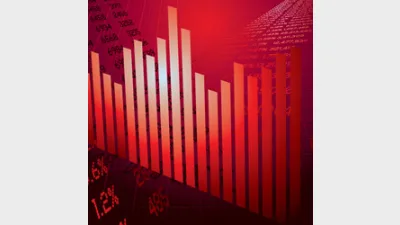Global equities: expanding your horizons




Don’t let political instability, natural disasters and rising commodities deter you, writes Janine Mace – now is the time to invest in global equities.
Despite all the drama of natural disasters, political unrest and rising commodity prices, the global economy is recovering and global share markets are the place to be. That’s the key message from investment experts and it is an important one, particularly in light of the recent underperformance of the Australian share market.
According to the March Quarter 2011 Investment Manager Outlook survey undertaken by Russell Investments, sentiment towards growth assets hit a record in the survey with ‘unprecedented support’ for global share markets.
“For the first time in two-and-a-half years international shares were more favoured than Australian shares, signalling increased confidence in US growth and stability in other developed markets,” the report notes.
According to Russell portfolio manager Scott Bennett, investment managers now favour global growth assets due to the stronger growth being experienced in the US and signs of a European recovery.
“The strong Aussie dollar is making offshore assets appear cheap at current valuations, and with all signs pointing to a recovery in developed international economies, managers are seeing increasing opportunities offshore,” he says.
It is a sentiment echoed by Credit Suisse Private Banking head of Australia research David McDonald.
“The outlook for the global economy is positive. We do not expect big growth numbers, but we are confident the recovery is on track – especially in the US. We are not forecasting strong growth, but rather, solid numbers,” McDonald says.
Within the positive picture some markets are performing much better than others, making stock selection critical, according to Principal Global Investors (Australia) CEO Grant Forster.
“The picture is solid but not over-exciting. We will still get volatility in equities, but we see a more benign story going forward,” Forster says.
Good cash flows, reasonable valuations
Although international equities are back in favour, it is far from ‘game on’ and a return to the booming pre-global financial crisis (GFC) years. Challenges remain, despite cash flows supporting markets and valuations being pretty reasonable, according to Threadneedle’s UK-based head of global equities, Jeremy Podger.
“We are in a more mature phase of the earnings cycle and are now moving into a ‘recovered’ phase for the global market,” Podger says.
“You have to look at where we have come from since 2007, which was the peak year and when markets started worrying about a possible downturn. In 2011 company earnings will exceed the level of 2007, but the market has not risen as much.
“Company balance sheets are stronger as they have been conserving cash, and this means equities are better value than in 2007,” Podger says.
Forster agrees companies are much better positioned than in the aftermath of the GFC. “Low inflation and interest rates in the US and Europe are seeing companies reflate their balance sheets, and this is leading to profit growth and better performance,” he says.
“In the US, P/E [price to earnings] ratios are still looking very good and investors are now buying stocks for dividends as interest rates are so low.”
With investor concern slowly diminishing, bonds are losing favour.
“There has been a tremendous rally in fixed interest assets, but now bond yields are lower. Investors are looking for somewhere to put the money they had previously allocated to the bond market,” Podger explains.
Although emerging markets were the first to rally after the GFC, the move back into equities only started in earnest late last year.
“Even with emerging market inflows, we still didn’t get inflows into equities as combined outflows were about equal to the inflows,” Podger says.
“This pattern reversed sharply in the fourth quarter last year and early this year the US renewed its tax credits and made announcements about QE2 [the second round of quantitative easing] which led to greater optimism about the recovery of the US economy.
“In 2010 the view was the US was bumping along the bottom, but that view changed in the first quarter of 2011. This led to a reversal of the trends of the past few years,” Podger says.
Much of this shift has been obscured for Australian investors by the dramatic appreciation of the local currency.
“We have seen a steady grind higher by the market in general, but this has been somewhat masked when you look at it in Australian dollar terms,” Podger notes.
McDonald agrees this is an issue. “Performance in the US and Europe has gone quite well so far this year, but the strength of the Australian dollar has made it not as good for Australian investors as for those in the local market.”
What’s ahead for markets?
When it comes to predicting the future for global equity markets, the key for most investors remains the US.
Despite all the talk about economic influence shifting from the West to Asian markets, the performance of the US and developed economies remains critical to investment returns, given the composition of the key investment benchmarks.
For example, the MSCI All Countries Index consists of 50-55 per cent US and Canada, 30 per cent Europe (including the UK) and 10 per cent Japan, with the rest of the world representing only 6 per cent.
This makes the renewed strength of the US equity market (which is up 7 per cent year-to-date) the important story.
According to Fidelity Investment Management (Australia) investment commentator, Michael Collins, the US picture is good, with 68 per cent of companies exceeding earnings expectations in the recently completed reporting season.
“Their economy is growing and they have a very easy monetary policy. The first four months of this year the market was up to a three-year high,” Collins says.
“US corporate activity is occurring and this is leading to stock prices rising.”
Forster agrees the recovery in the US economy is flowing through to company results. “They are seeing higher profits, and fundamentals are good and going in the right direction,” he says.
“Over the next 12-18 months, the US would be our number one pick for a country, but we would have an equal weighting in emerging markets.”
The big negatives for the US remain the end of the US Federal Reserve’s quantitative easing program and the government debt problem.
Bright spots and rising inflation
Things are also looking up in Europe, despite the continuing government debt issues.
“The European market is variable, but in general it is up and in US dollar terms Germany is up 16 per cent this year,” Podger says.
Collins agrees there are good prospects for some European equity markets. “Underpinning Europe is that equities are cheaper than their long-term 12-month forward P/E average of 13.5. They are now down to around 11,” he says.
Some European economies are also benefiting from strong growth in Asia. “The German market is up 7 per cent year-to-date and it is performing well off the back of emerging market growth, which is seeing export-led growth and falling unemployment,” Forster notes.
However, prospects for the indebted Eurozone countries such as Greece and Portugal are less positive.
“Europe has a two-speed economy. You can see it in bonds, with Greek 10-year bonds at 15 per cent and German 10-year bonds at 3 per cent,” Forster says.
“We expect debt restructuring in the peripheral countries and so we are limiting our exposure to European banks, but we have exposure to good German and French companies,” he says.
Collins believes Japanese equities are also attractively priced, with the expansionary policy of the Bank of Japan helping to support its equity market, despite the recent natural disaster.
Podger agrees, saying: “The Japanese earthquake was essentially a temporary setback, as domestic demand is holding up and supply chains are now recovering.”
The picture is also good for emerging markets, according to Collins. “Emerging markets are growing well.”
Forster agrees, but believes growth prospects are slightly lower than previously. “Valuations in emerging markets got ahead of themselves in the past 12 months,” he says.
A significant drag on emerging market growth is mounting inflation. “Emerging markets now have inflation problems due to a number of factors such as rising commodity prices – both food and oil. Interest rates are also rising and there is the US Federal Reserve’s buying policy,” Collins says.
Austerity and easing
Despite the largely positive picture for global equities, clouds remain on the horizon, according to Podger. “There are a number of serious headwinds for the economy globally,” he says.
In Europe, he believes the mood for government austerity will influence equity markets. “It will not be boom time due to the reining back of government spending, which will dampen down growth prospects and this will lead to investor skittishness,” Podger says.
McDonald agrees problems remain. “In the short-term there are issues around that can cause wobbles in the market – such as Greece. Uncertainty over this is continuing and it keeps reappearing in the headlines. The same with China, where inflation is causing uncertainty.”
Although the ongoing problems with European debt in the peripheral countries such as Greece and Portugal are a concern, a break-up of the Eurozone seems very unlikely. “European authorities are absolutely determined to maintain the integrity of the Eurozone,” Podger says.
“However, we would be concerned if there was a dramatic restructuring of Greek debt as this would lead to problems, especially for German banks. If you include all the peripheral country debts, a number of the German banks would take a major hit to their capital,” he says
Despite these concerns, the thing keeping investors awake at night is the end of the US’s QE2.
“The biggest concerns hanging over markets are the end of QE2 and the Eurozone fiscal deficit,” Podger says.
“The market is expecting the end of QE2 and bond yields have not gone up dramatically, so we are reasonably confident it will not have a great impact. We are not overly concerned, but we are vigilant on this issue.”
Forster agrees this is a big uncertainty for markets.
“Policy risk could destabilise the situation and the main one is QE. The introduction of QE3 would be pretty disastrous as it would lead to rising commodity prices and inflation in the emerging markets. It would be the key risk if it were to go ahead, since this is what is keeping the US dollar very weak,” he says.
Leaving your money at home
Given the positive outlook for international equities, the tendency of Australian investors to invest their money close to home does not look wise – particularly given the recent underperformance of the Australian market.
As Perpetual Investments head of investment markets research Matt Sherwood notes: “Although the Australian economy has outperformed all of its international advanced peers over the past 10 years, the Australian share market has severely underperformed most international markets over the past 18 months.”
During this period the Korean market rose 34.3 per cent in local currency price terms, Germany was up 31.9 per cent, the US up 29.8 per cent, and the UK up 21.8 per cent – compared to the Australian share market rise of 7.4 per cent.
This trend is unlikely to change any time soon, according to Sherwood. “The Australian share market [has recorded] lower earnings per share growth in the past two years relative to the US and this trend is forecast to continue in two of the next three years.”
McDonald believes the underperformance of the Australian market makes the issue of home country bias an important issue, both for advisers and clients.
“For investors it is important to have diversification and think outside their local market. It is understandable for investors to invest in things they know and understand, but there are two sides to this and one is to get exposure to other economies and the world,” he says.
“The other is getting exposure to sectors you can’t get exposure to here, such as the IT sector – the Intels, Samsungs and Googles. We miss out on them in Australia. Also the capital goods sectors in Europe and the US where they build things like trains and power plants for Asian growth markets.”
This highlights one of the key problems for Australian investors, which is the unusual composition of the local share market compared to other markets. The index in Australia is heavily weighted towards financial and resource stocks.
“Investors often do not recognise the skew in the Australian index. For example, in the US the tech sector is 12 per cent-13 per cent of the S&P500, but in Australia it is close to zero. Most investors have not thought through the consequences of that index composition,” McDonald says.
“Another example is consumer discretionary exposure, which is poor for Australian investors. Local investors miss out on that and are not able to access the growth in those sectors.”
The composition of the local index also means investors who invest only in Australian stocks are missing out on the sectors predicted to outperform in the future – IT and healthcare.
“IT is over 10 per cent of the MSCI Index, while healthcare represents 10 per cent. That is why to invest only in the Australian market is to be poorly diversified by stock, sector and country,” Collins argues.
“There are great opportunities and companies overseas that Australian investors are not benefiting from, as they are not getting access to the world leaders,” he says.
Forster agrees: “Most Australian investors are overweight Australian equities, but the top investment themes globally are healthcare and technology. So if you are long Australian equities, you are not getting exposure to those sectors.”
They also have highly concentrated portfolios. “In Australia the top 10 stocks combined represent nearly 50 per cent of the local index. The top 10 MSCI World stocks come to less than 10 per cent of the index,” Collins notes.
Recommended for you
A quarter of advisers who commenced on the FAR within the last two years have already switched licensees or practices, adding validity to practice owners’ professional year (PY) concerns.
Integrated wealth and financial services group Rethink has launched a financial planning arm called Rethink Wealth to expand beyond property investing and into holistic wealth management.
While adviser numbers continue to slowly creep back up, the latest Wealth Data analysis reveals they would actually be in the green for the calendar year if it weren’t for so many losses in the limited advice space.
Iress has appointed a chief AI officer to spearhead the fintech’s strategic focus on AI, with chief executive Marcus Price describing how the technology opens the doors to a “new frontier for wealth advice”.













